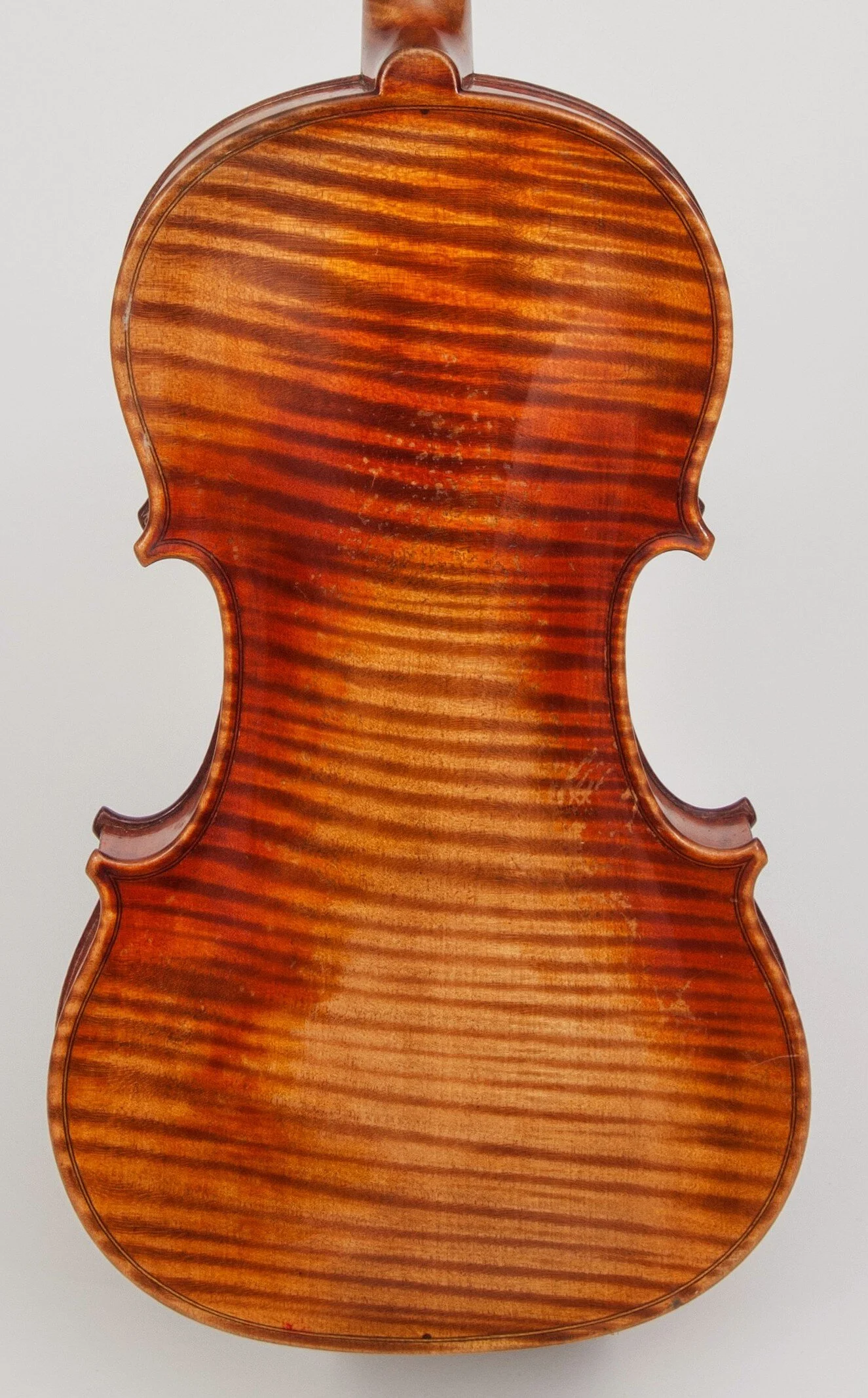What determines the value of a violin
I have often been asked what actually determines the value of a violin. To outsiders, the valuation seems completely arbitrary. All violins look alike. Why is one so much more expensive than the other? Most people think the price is determined by the sound… It may come as a surprise, but nothing could be further from the truth. An appraiser will not play the violin, but will only determine the value by looking at the instrument. Below are the most important aspects that determine the value of an instrument.
Where the violin is built
Chinese violins are the cheapest. The quality of these violins is getting better and better, but the craftsmanship is less developed than in European countries where a violin making tradition has existed for centuries. The quality of the wood is also generally less and the violins in China are often made in series in factories with less attention to quality and craftsmanship. French, German and Italian violins are valued higher than those in other European countries. It is not for nothing that the most famous violin makers come from these countries; Stradivarius (Italy), Vuillaume (France) and Stainer (Germany/Austria). Italian violins from Cremona are the most expensive followed by violins from France and then Germany
The violin maker
The name of the violinmaker has a major influence on the price. If a violin is built by a violinmaker of great repute, even if it is built by one of his workshop associates, it is worth much more than a master violin from an unknown maker. More expensive violins actually always have a label in the violin that indicates who built the violin. Master violins (completely built by the violin maker himself) also have a year, signature and sometimes an opus number and trade mark stamp. Simpler atelier violins (made in the workshop of the violin maker in question) often have no year, but only the name of the workshop and the place where the violin was built.
The craftsmanship
The dedication, accuracy and artistry with which the violin is built also determine the price. For example, you can pay attention to the F-holes, the inlay, the scroll, the lacquer and the curvature of the blades. This is difficult to see to the untrained eye, but if you look closely, you will see big differences. Factory violins are machine-made in a few days. Each employee makes a specific part of the violin. How the parts then add up to make the whole violin remains to be seen. With a master violin, the violin maker makes the entire violin himself and fine-tunes all parts optimally. He spends 200 to 400 hours on this. Then, you can also see the passion and craftsmanship in the instrument.
Quality of the wood used
The quality of the wood is also important. The differences are particularly visible on the back. The back is almost always made of maple wood. The more beautiful the flaming (tiger print) in the maple, the more expensive the violin. This flaming is often accentuated by the use of a beautiful soft oil lacquer. See above an example of a violin with a beautiful one-piece flamed back (Saxon master violin 4000 euros). With cheap violins there is no flaming at all. This flaming also plays a role in the scroll and the neck. The spruce top is less distinctive. Expensive violins often have a fine grain structure in the middle that widens out towards the sides of the top. Very cheap violins can often be recognized by a lighter fingerboard (no expensive ebony has been used) and inlays (the thin strip of black wood that is 'inlaid in the edge of the front and back') that is painted on the wood. Cheap Chinese violins often have a hard spirit varnish, because of the short drying time of this varnish.
Store/Violinmaker where you buy the violin
Every shop and violin maker has its own pricing policy. Larger, reputable violin makers will generally charge slightly higher prices for their instruments. Because each violin is unique and different and every store assesses value-determining aspects differently, prices can vary quite widely. A violin of 1500 euros at one shop can cost 3000 or even 4500 euros at another.
So...
Surprisingly, the price of the violin is not determined by the sound. While this is really the most important thing for most violinists. You want a violin that sounds as beautiful as possible. My advice is therefore to always compare several violins with each other so that you can make a good decision for yourself. And then the most expensive violin is not always the most beautiful.




